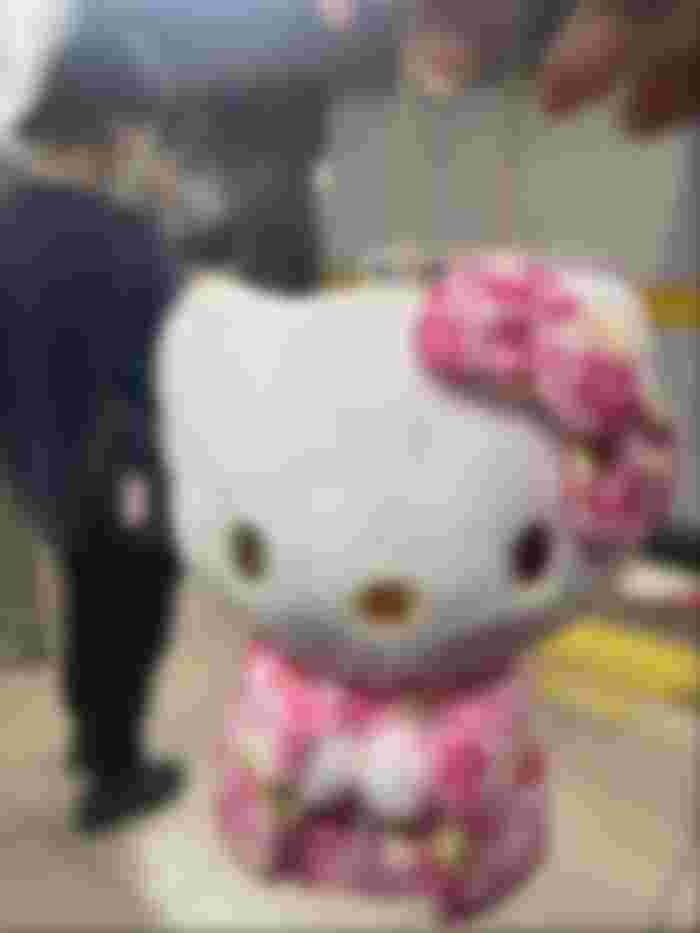Let's know about the "kawaii" culture.
Disclaimer: I am the sole author of this article. Some parts of the article were part of my paper submitted to one of my subjects called Japanese Culture.
In case you don't know, kawaii (かわいい) is a Japanese word that literally means "cute". It is a generalization of something that's adorable, or lovable... some articles also mentioned that the meaning of kawaii implies someone or something without any negative traits.
Japan = cuteness culture
Why is that? Some might think it's because of the cute and high-pitched voice in speaking Japanese... Some might think it's about the anime, some might suggest it's just their overall fashion sense.

Kawaii is one of the very first Japanese words that I learned years back when I did not have any formal education in the Japanese language. The term kawaii is composed of two kanji characters which are “可” which signifies “able”, and “愛” which means “love”, thus, putting them together means “lovable” (Sato, 2009). However, the most known English counterpart of the word is “cute”. In a sense, kawaii’s meaning is as simple as it gets - cute, however, in Japan, it’s more than just having a cute face, kawaii can be a generalization of almost anything that is considered adorable, or lovable, whether it be a human, an animal, or any other kind of stuff that exudes this cuteness.
In Japan, you can find kawaii stuff everywhere - in shops, restaurants, at home or even at the station. It’s kawaii everywhere. But what started this cuteness culture in Japan?
There are many sources that tell how kawaii came to be. According to Voyagin (2021), kawaii’s etymology dates back to the Heian period, which says that kawaii came from the word “kaohayushi” which literally means red face from embarrassment or guilt. It later became “kawayushi” which has a variety of meanings from embarrassment, vulnerability, small, and cute. These original meanings still stand today but have evolved into feelings of protectiveness, love, and care. Oe & Weeks (2020) mentioned in their article that the culture had originated from Yumeji Takehisa, an artist, painter, and poet from Taisho period (1912-1926). He was considered as the godfather of kawaii because of his unique style which features “young woman with thin bodies, big eyes, and melancholy expressions” (Japanese Kawaii Culture, 2022). He also is known as one of the first sellers of kawaii goods as shown in postcards, letter sets, and other stationery goods in his shop known as Minatoya Ezoshiten in Tokyo in 1914.

Another interesting story on how kawaii culture became more popular was during the Showa era (1926-1989) because of the popularity of Osamu goods created by Osamu Harada. Most of these goods have art influences from American comics, anime, and pop art, among others. These goods had cultivated a fanbase of the young generation such as teenagers and high school students during the 1970s to 90s (Oe & Weeks, 2020). Moreover, the kawaii culture had gained more popularity in the Western parts of the world particularly in North America when Hello Kitty, a known emblem of kawaii merchandise recorded a $96 million dollar profit in 2002.
This gave rise to articles and coverage about the rise of Hello Kitty and cute characters thereafter in other parts of the world.
Kawaii can sometimes be associated with “merely about beauty and perfection” but according to Voyagin (2021), this is what kawaii is not. Kawaii should just not be about the round eyes, pastel colors, and cute face. Though these features can be considered a standard of beauty in Japan, they shouldn’t be. As per Kazuhiko Hachiya, designer of PostPet software, having this idea of perfection among cute items can sometimes make people uneasy, to him, kawaii or cuteness should be about asymmetry and imperfection. This also paved the way for the concept of “ugly cute” in Japan, more known as “kimo-kawaii” which means “ugly cute/disgustingly cute”, and “dasa-kawaii” which means “tacky cute” or uncool, and “guro-kawaii” which mean “gory-cute” like monstrous. To some people, Funasshi, Chiba Funabashi City’s unofficial pear fairy mascot are known example of kimo-kawaii, while Nara’s very own Sento-kun is considered is “guro-kawaii” by some people. There are many varying opinions about this, but, more importantly, the culture of kawaii is still there.
Before coming to Japan, I got fond of the cuteness of characters like Hello Kitty (and friends), Super Mario (team), Ghibli characters, Sailormoon, Doraemon, etc. However, living here for almost a year now, it was made known to me that kawaii is more than just these characters being shown on television or in stationery items, I now understand why “kawaii” is such a term commonly used by Japanese people every day because kawaii can literally be found everywhere! It makes me appreciate how vast Japanese culture’s spectrum is – from the “more serious” down to the contemporary, kawaii culture that’s been a trademark of Japan to the world ever since.
References:
Japanese Kawaii Culture. (2022, February 11). Yumeji Takehisa – Taisho Romanticism and the roots of Kawaii. https://japanesekawaiiculture.com/takehisa-yumeji-taisho-romanticism-and-the-roots-of-kawaii/
Oe, H., & Weeks, M. (2020). Kawaii culture in Japan: A bibliometric analysis and text mining approach based on pop-cultural diplomacy and transmission into global values. Budapest International Research and Critics Institute (BIRCI-Journal): Humanities and Social Sciences, 3(4), 3990-4004. https://doi.org/10.33258/birci.v3i4.1495
Sato, K. (2009). From Hello Kitty to Cod Roe Kewpie A Postwar Cultural History of Cuteness in Japan. https://www.asianstudies.org/wp-content/uploads/from-hello-kitty-to-cod-roe-kewpie-a-postwar-cultural-history-of-cuteness-in-japanA.pdf
Voyagin. (2021, August 18). Kawaii 101: Behind the cultural phenomenon. Rakuten Travel Experiences Blog. https://blog.govoyagin.com/kawaii-culture-101/


I keep on using the word ‘kawaii’ without knowing that it is more than the definition ‘cute’ I knew HAHAH. Anyway. Thank you for this informative article. Keep it up! Anzen o kakuho shi, o ai shimashou, Oneesan.